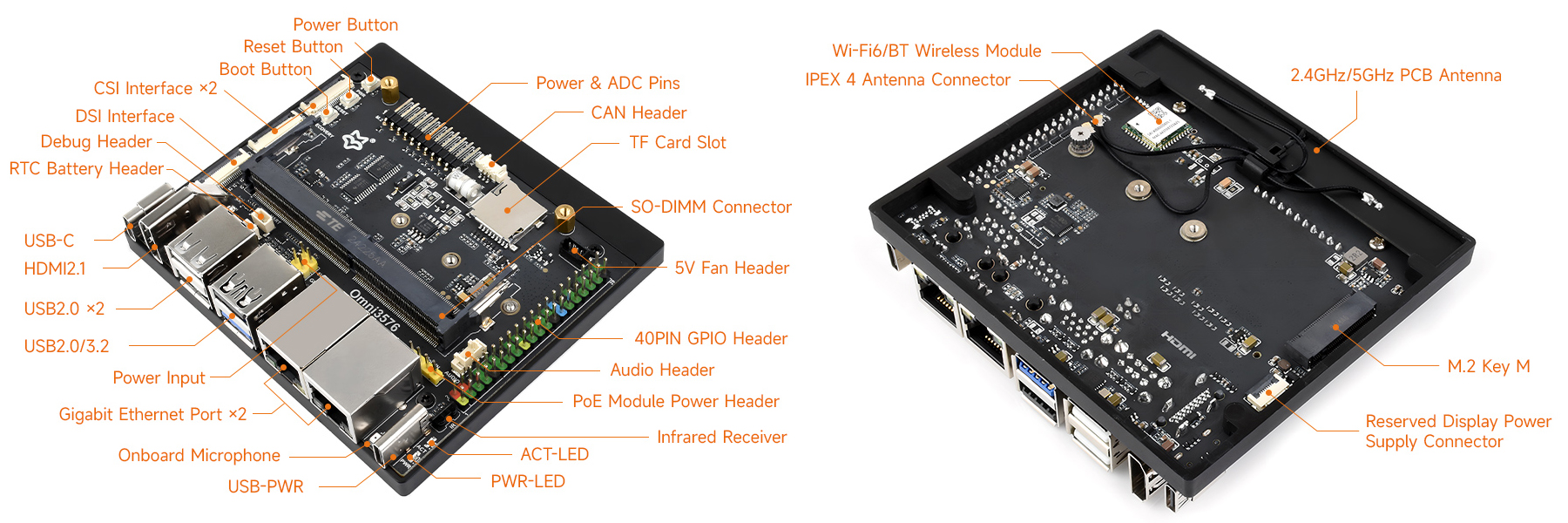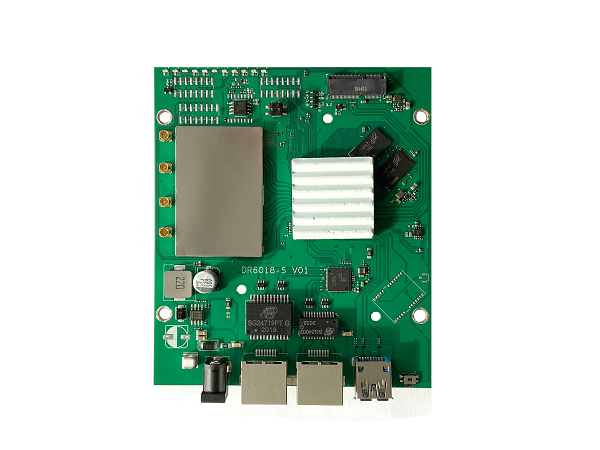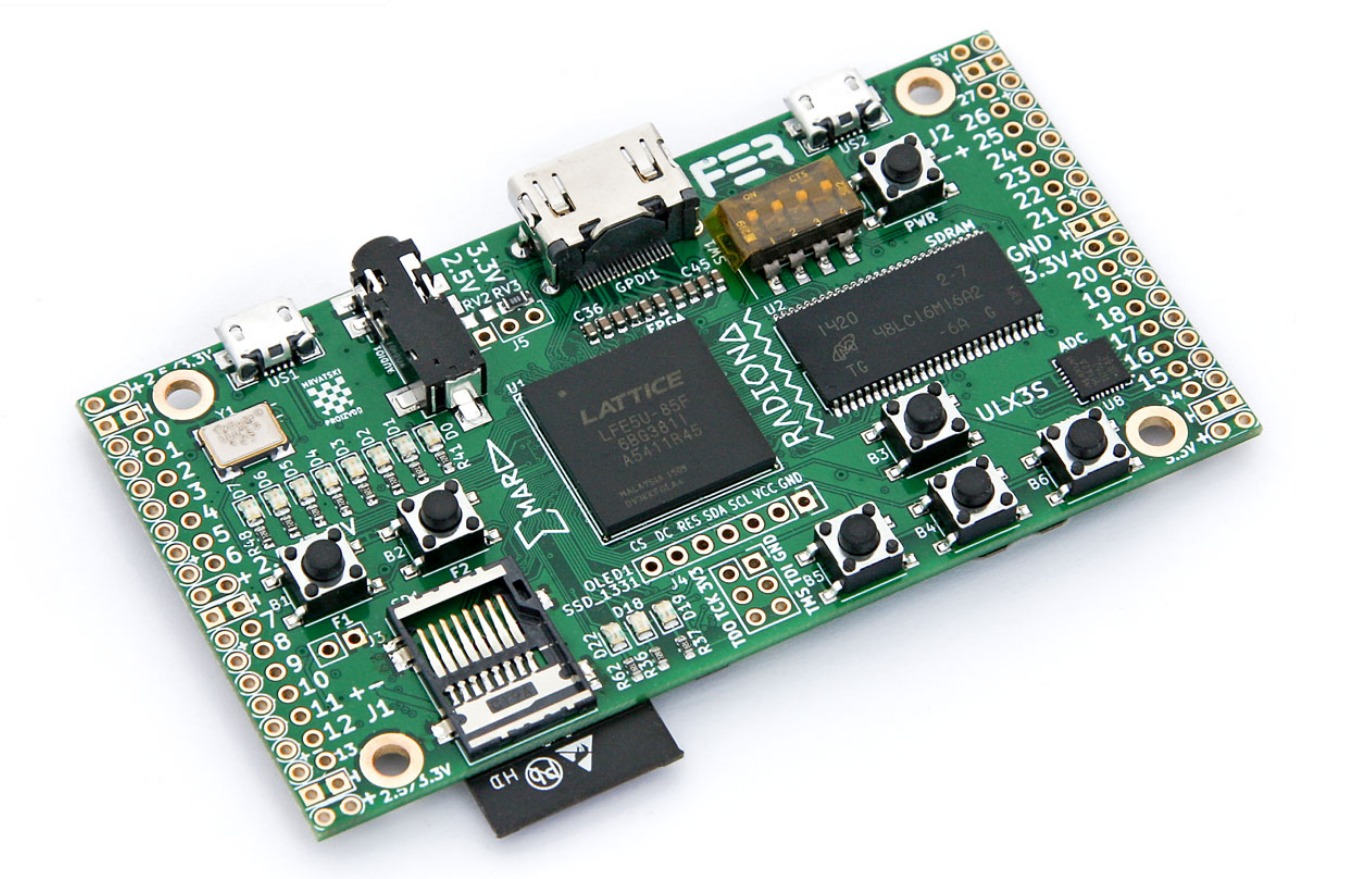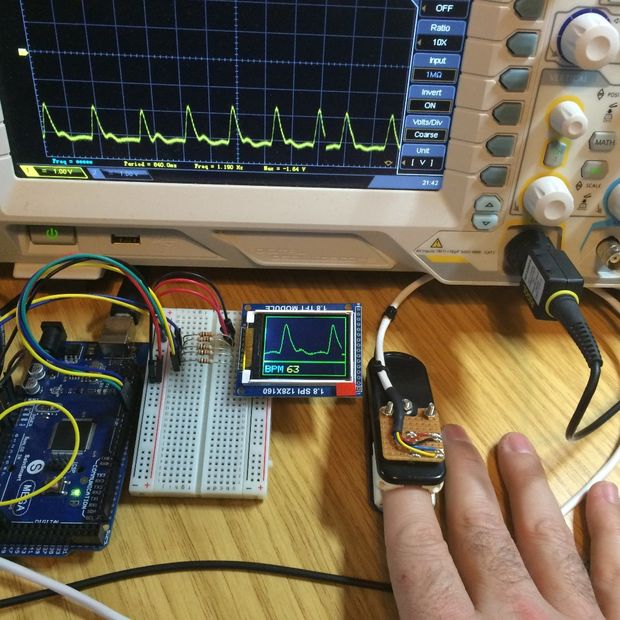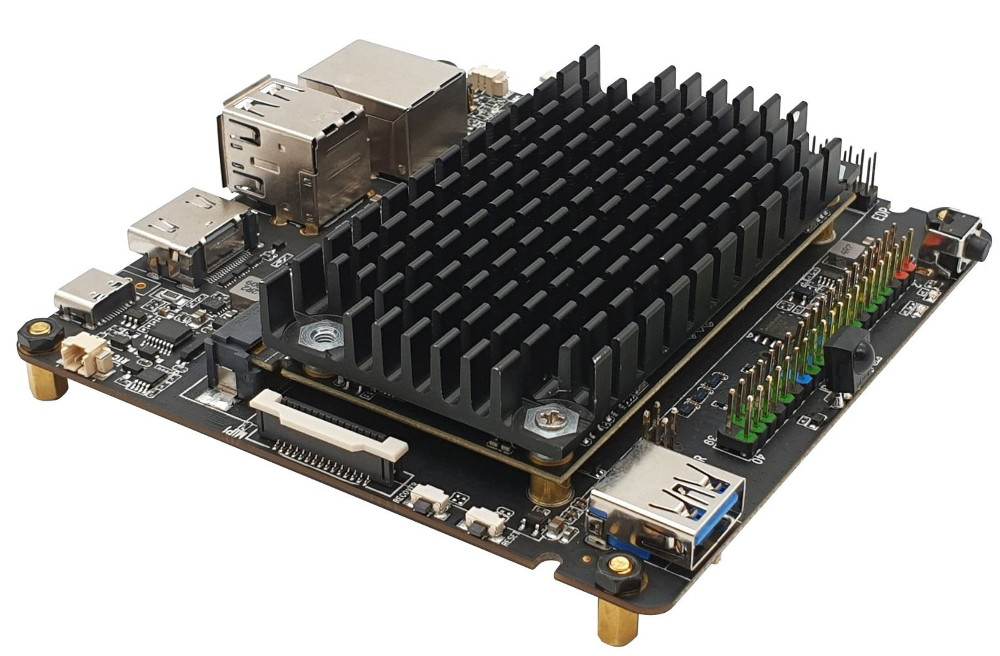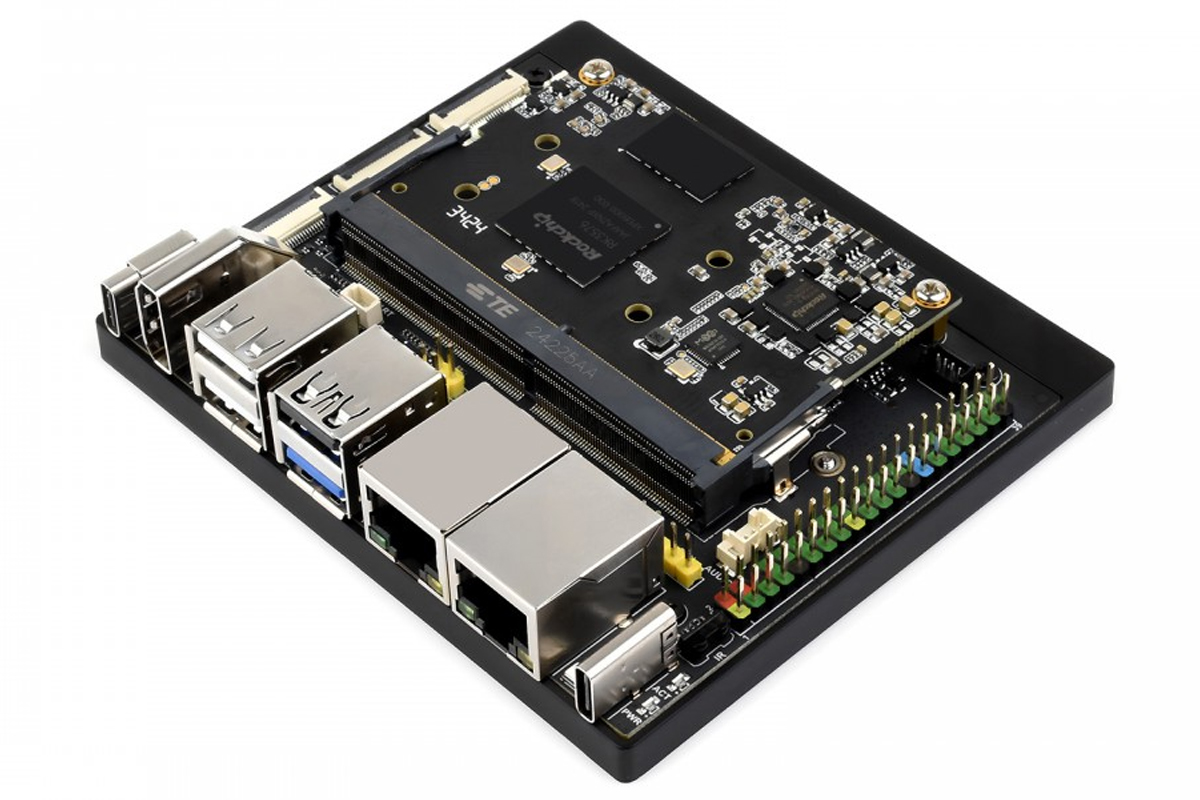
Luckfox Core3576 AI Development Board Features Octa-Core RK3576 Processor, 6 TOPS NPU, Dual Ethernet, Dual Cameras, and 4K Decoding
Luckfox has recently launched the Omni3576 Edge Computing Development Board, a high-performance AI development platform powered by the Luckfox Core3576 module with an octa-core Rockchip RK3576 processor (quad-core Cortex-A72 and Cortex-A53) running at 2.2GHz. It features a 6 TOPS NPU for advanced AI tasks, supporting frameworks like TensorFlow, PyTorch, and Caffe, along with a Mali G52 GPU for high-performance graphics @0.9GHz, supporting OpenGL, OpenCL, and Vulkan standards.
It offers options for 4GB or 8GB LPDDR4X RAM and 0GB, 32GB, or 64GB eMMC storage, dual Gigabit Ethernet ports, Wi-Fi 6, Bluetooth 5.2, 4K video encoding/decoding, dual CSI camera interfaces, HDMI 2.1, M.2 NVMe SSD support, and Raspberry Pi-compatible GPIO headers. The board enables applications like object recognition, face recognition, vehicle detection, and text recognition designed for AI edge computing. Edge computing, intelligent displays, robotics, industrial control, automotive electronics, and cloud terminal solutions are considered ideal by it. It is Flexible and suitable for both development and deployment scenarios.
Previously, we have covered some similar Rockchip RK3576-based Development Boards including the Firefly AIO-3576JD4, the Boardcom RK3576 power SOM and development board, and many more. Feel free to check these out, if you are interested in this topic.
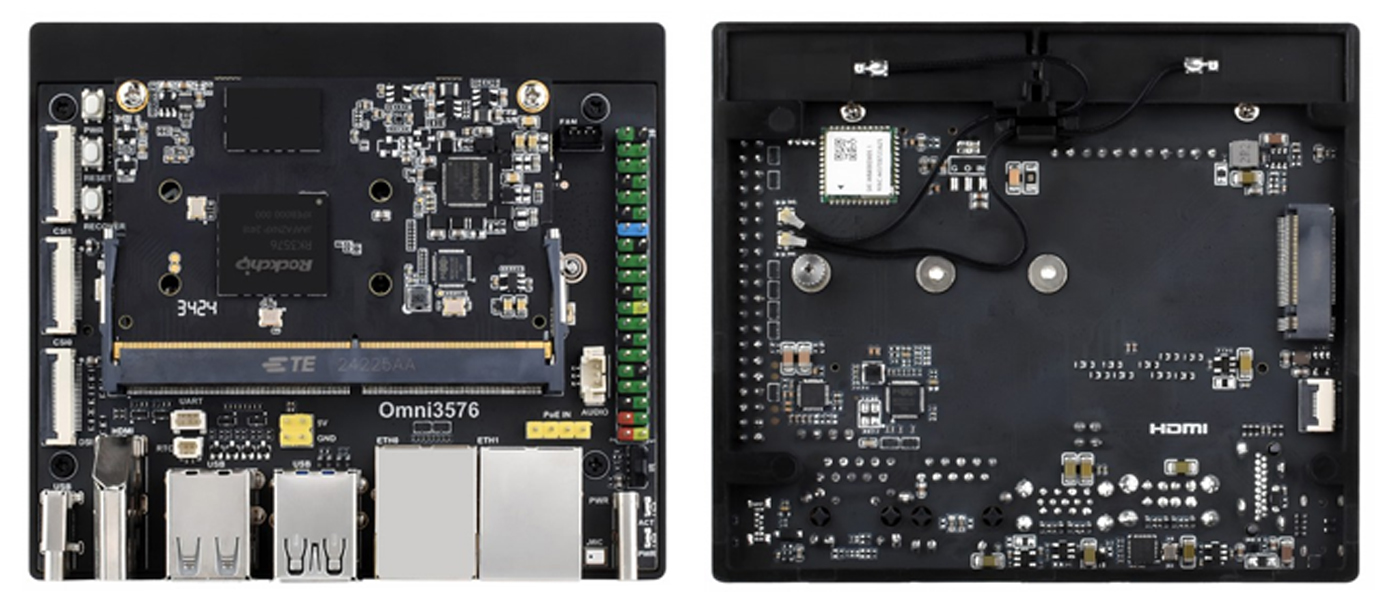
Luckfox Core3576 AI Development Board Specifications:
- Processor: Rockchip RK3576
- Quad-core Cortex-A72 @ 2.2GHz + Quad-core Cortex-A53 @ 2.0GHz
- NPU: 6 TOPS computing power, supports INT4, INT8, INT16, FP16, BF16, TF32 mixed operations
- GPU: ARM Mali G52 MC3 @ 0.9GHz, supports OpenGL ES 1.1/2.0/3.2, OpenCL 2.0, Vulkan 1.1
- Memory:
- 4GB or 8GB LPDDR4X RAM
- Storage:
- 0GB, 32GB, or 64GB eMMC
- Video Output:
- 1 x HDMI 2.1 (4K @ 120fps)
- 1 x 4-lane MIPI DSI (2K @ 60fps)
- Video Input:
- 2x 4-lane MIPI CSI camera interfaces
- Video Codecs:
- Decoding: 4K @ 120fps (H.265/HEVC, VP9, AVS2, AV1); 4K @ 60fps (H.264/AVC)
- Encoding: 4K @ 60fps (H.265/HEVC, H.264/AVC)
- Audio:
- Onboard microphone
- 3-pin audio output header
- Connectivity:
- 2x Gigabit Ethernet ports
- Wi-Fi 6
- Bluetooth 5.2/BLE via onboard wireless module
- IPEX antenna connector
- Expansion:
- 40-pin GPIO header (Raspberry Pi HAT-compatible)
- M.2 PCIe NVMe SSD support (2242/2260/2280
- USB:
- 1x USB Type-C (5Gbps, DP, OTG support)
- 1x USB 3.2 Gen1 (5Gbps)
- 3x USB 2.0 ports
- Misc:
- High-speed CAN FD and CAN 2.0A/B
- IR receiver (38KHz)
- 5V fan header
- 2Pin SH1.0 RTC battery header
- PoE header
- TF card slot
- Power Input: 5V DC via USB-C jack
- Operating Systems: Buildroot, Debian, Ubuntu, Android 14
- Operating Temperature: 0°C ~ 60°C
- Dimensions: 103mm x 90.5mm
- Weight: 0.70kg
Additionally, the Core3576 module provides flexible memory configurations, offering up to 8GB of LPDDR4X RAM and 64GB of eMMC storage like Firefly’s Core-3576JD4, which we have previously written a few days back. For additional storage, the carrier board includes a microSD card slot and a PCIe slot compatible with NVMe SSDs.
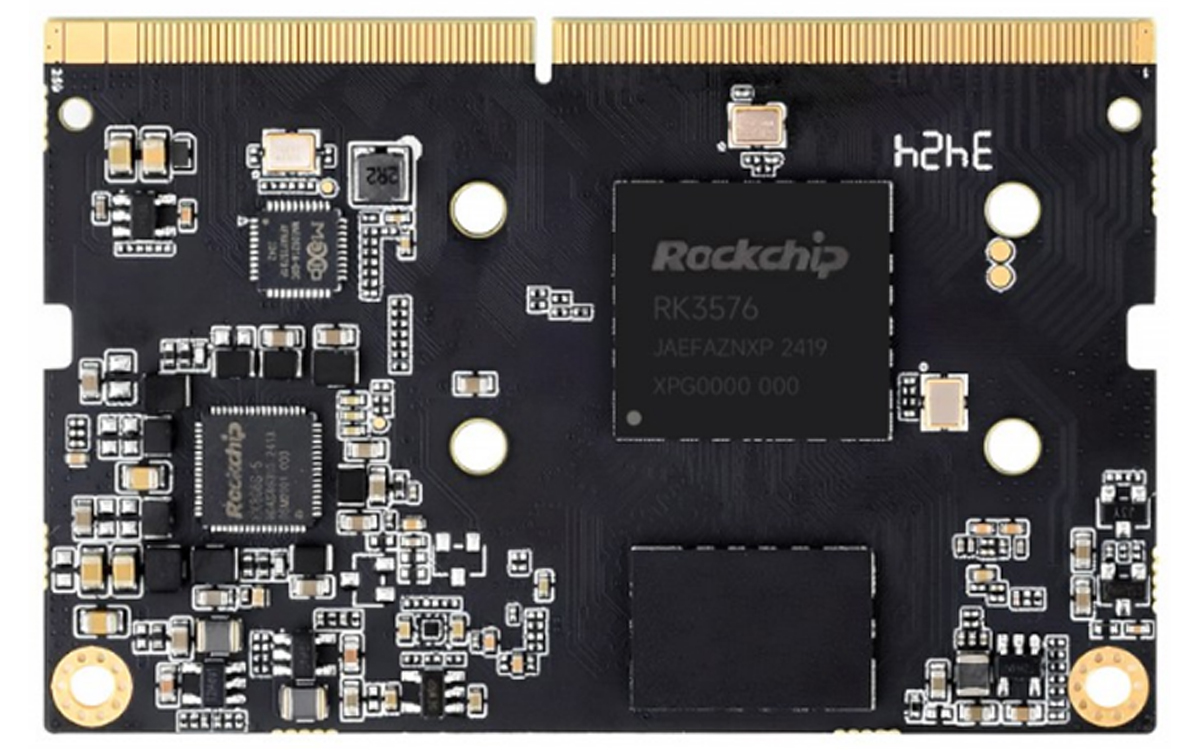
In addition, this board is also equipped with dual 4-lane MIPI camera interfaces, making it ideal for tasks such as depth sensing and stereo vision. It is compatible with various operating systems, including Buildroot, Debian, Ubuntu, and Android 14. Comprehensive technical details and a Getting Started guide can be found on the Luckfox Wiki.
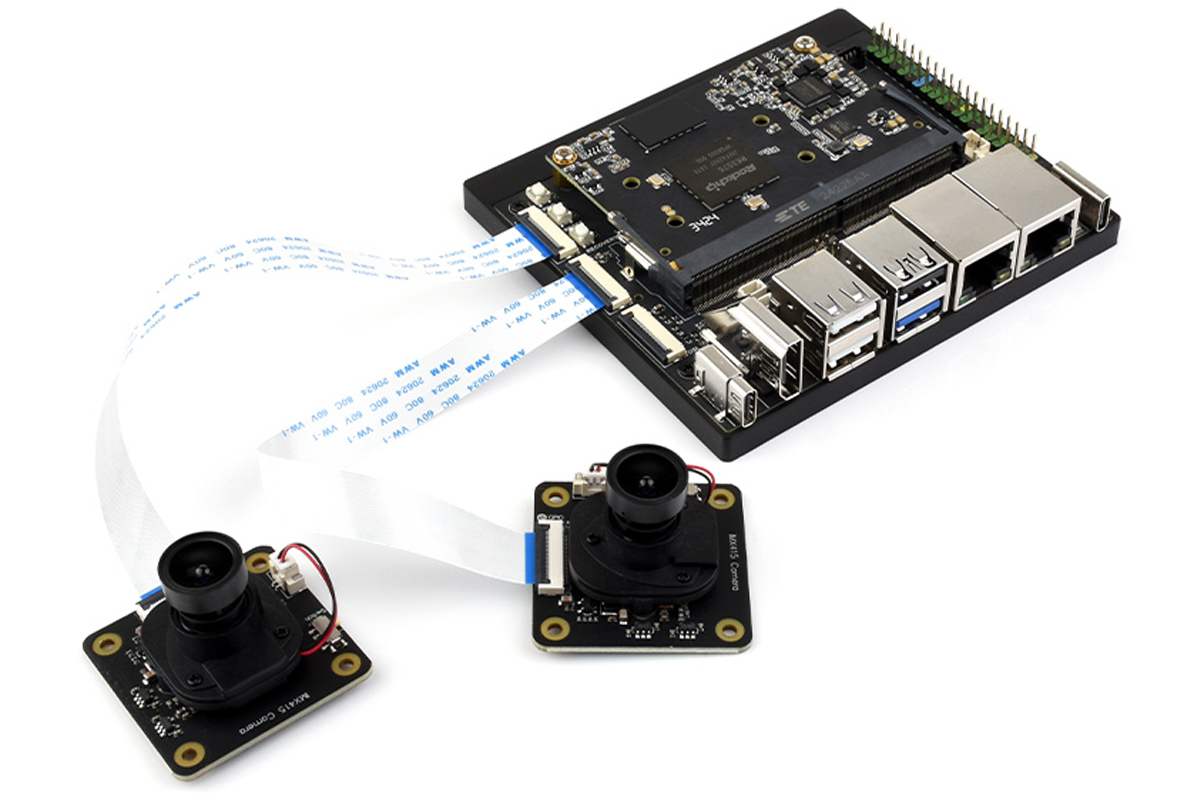
The Luckfox Omni3576 with Rockchip RK3576 AI development board starts at $99.00 for the 4GB RAM version without eMMC, while the 8GB RAM model with 64GB eMMC is priced at $132.99. It is available for purchase on the Luckfox website and through Waveshare. The Luckfox Core3576 Module is also available at $66.99 on Luxfox’s official store.






